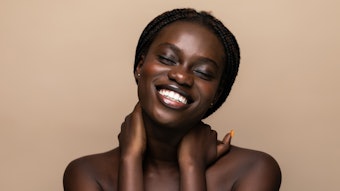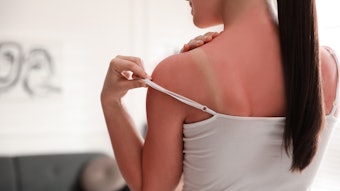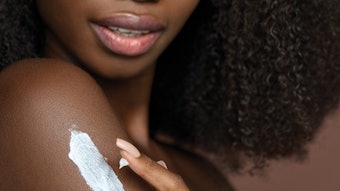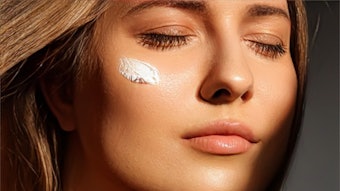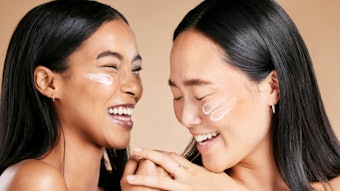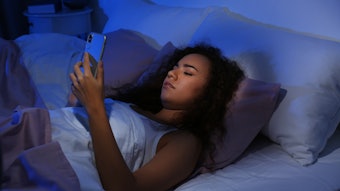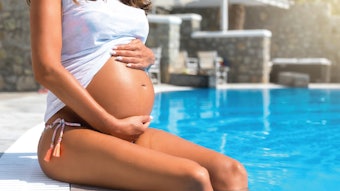
Sun protection is an everyday must for anyone concerned with keeping their skin in top shape, and that includes avoiding wrinkles, brown discolorations, building collagen, keeping skin firm and even preventing skin cancer. SPF 15 is the minimum rating to look for and greater is better for some skin colors and conditions; all sunscreens must be liberally applied; and UVA protection is critical. Following are some helpful tips from Paula Begoun, author of Don't Go to the Cosmetics Counter Without Me (Beginning Press, 2009).
UVA protection depends on the active ingredients in the product you are recommending to clients, so be sure one or more of these active ingredients are included: avobenzone (sometimes listed as butyl methoxydibenzoylmethane), titanium dioxide, zinc oxide, mexoryl (ecamsule) or, outside the United States, tinosorb.
Decisions, decisions
There are several important factors that influence how clients choose and how they should apply a sunscreen.
- How long they are going to be in the sun or sitting next to a window (UVA radiation, the sun's most damaging rays, come through windows)? The longer they are going to be in the sun or exposed to UVA radiation via windows, the higher the SPF number they need to apply.
- Are they willing to apply your chosen sunscreen liberally? No matter what SPF rating you choose, they have to apply it liberally. If they aren't applying it liberally, always go for a higher number to ensure they are getting as many sunscreen ingredients on their skin as possible.
- Will they be swimming or perspiring heavily? If so, recommend that they chose sunscreens labeled "water resistant" or "very water resistant." Be sure to remind them to reapply as directed, especially after toweling off.
Clients will also want to take into consideration their skin types and whether or not they'll be wearing makeup.
- Those with normal to dry skin should use sunscreens in a lotion or cream base.
- Those with oily or combination skin should go for sunscreens formulated in a lightweight lotion with a matte finish, a liquid or an alcohol-free gel base. Many spray-on sunscreens are excellent for oily skin.
- If they're going to be wearing foundation, they can choose one with sunscreen and pair it with a moisturizer with sunscreen and a pressed powder with sunscreen.
What's their rating?
The ideal SPF number is a multiplication figure based on clients' skin color and the SPF number on the product.
Level 1 skin is very fair and often freckled. It burns easily within about 20 minutes of direct sun exposure and never tans. This is common for people with blue eyes and blond or red hair.
Level 2 skin is fair to light and often burns with about 30 minutes of direct sun exposure. Tanning may occur, but is minimal. This is common in people with blue, green or hazel eyes and red, blond or light brown hair.
Level 3 skin is light to medium or olive and sometime burns with about 40 minutes of direct sun exposure. Tanning is possible, but typically sunburn happens first. This level can apply to those of any hair or eye color.
Level 4 skin is medium to tan skin that rarely burns but can turn pink in about 60 to 90 minutes of direct sun exposure yet often tans easily. This is common for people with dark hair and eyes.
Level 5 skin is brown to dark brown skin that very rarely burns and tans easily in about two hours of sun exposure. Those with dark hair and eyes and of Middle Eastern or African-American descent are usually at this level.
Level 6 skin is black skin that never burns and always tans, though a tan is usually not apparent due to depth of natural skin color.
Regardless of your skin color and how easily you tan, wrinkles, skin discolorations and skin cancers are primarily caused by unprotected sun exposure.
Next, do the math
Your Level of Sunburn Risk x by the SPF Rating = Safe Sun Exposure for Your Skin Color
The SPF number is a rating that determines how long clients can stay in the sun without burning when they wear that product without needing to reapply it. It does not indicate quality of protection, just length of time. Here's how to do the math. If you have:
- Level 1 skin (very fair): That means you usually get a burn in about 15 to 20 minutes of unprotected sun exposure. Determining your skin's response to various SPF ratings works like this:
- SPF 15 x 20 minutes = 300 minutes (5 hours) of protection
- SPF 30 x 20 minutes = 600 minutes (10 hours) of protection
- SPF 45 x 20 minutes = 900 minutes (15 hours) of protection
- Level 2 skin (fair to light): That means you usually get a burn in about 30 minutes of unprotected sun exposure. Determining your skin's response to various SPF ratings works like this:
- SPF 15 x 30 minutes = 450 minutes (7.5 hours) of protection
- SPF 30 x 30 minutes = 900 minutes (15 hours) of protection
- SPF 45 x 30 minutes = 1,350 minutes (22.5 hours) of protection
- Level 3 skin (light to medium/olive): That means you usually get a burn in about 40 minutes of unprotected sun exposure. Determining your skin's response to various SPF ratings works like this:
- SPF 15 x 40 minutes = 600 minutes (10 hours) of protection
- SPF 30 x 40 minutes = 1,200 minutes (20 hours) of protection
- SPF 45 x 40 minutes = 1,800 minutes (30 hours) of protection
- Level 4 skin (medium to tan): That means you usually get a burn in about 60 minutes of unprotected sun exposure. Determining your skin's response to various SPF ratings works like this:
- SPF 15 x 60 minutes = 900 minutes (15 hours) of protection
- SPF 30 x 60 minutes = 1,800 minutes (30 hours) of protection
- SPF 45 x 60 minutes = 2,700 minutes (45 hours) of protection
- Level 5 and Level 6 skin (brown to dark brown or black): That means you usually get a burn in about 120 minutes (2 hours) of unprotected sun exposure. Determining your skin's response to various SPF ratings works like this:
- SPF 15 x 120 minutes = 1.800 minutes (*30 hours) of protection
- SPF 30 x 120 minutes = 3,600 minutes (60 hours) of protection
- SPF 45 x 120 minutes = 5,400 minutes (90 hours) of protection
* Note that level 5 and 6 skin should do just fine with a well-formulated sunscreen rated SPF 15. However, liberal applications is still important. If you do not think you'll be applying the sunscreen as liberally as you should, consider a sunscreen rated SPF 30.

